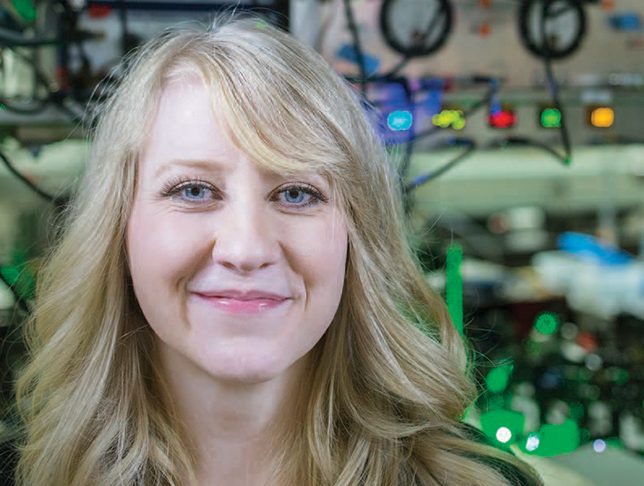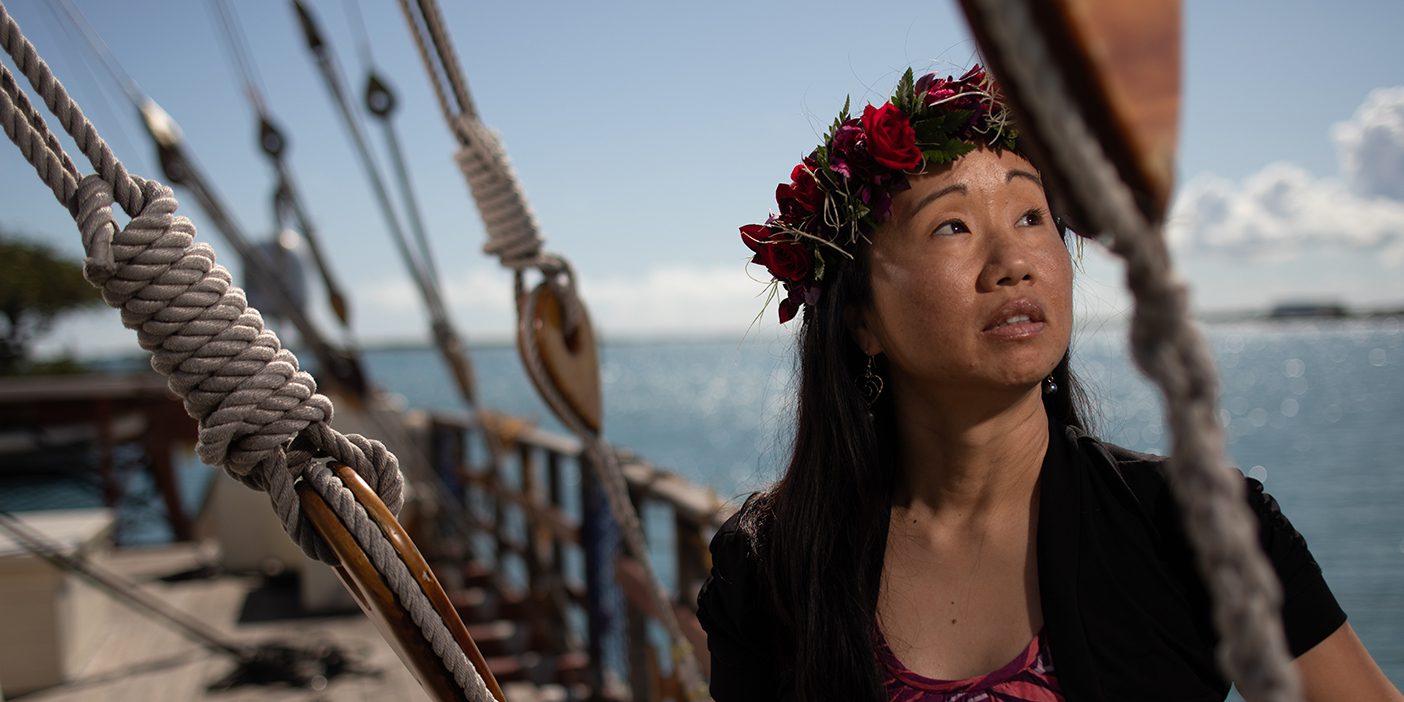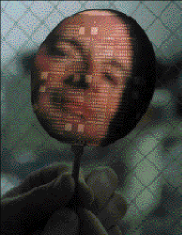A BYU PhD student helped produce the coolest research in Utah.

Hidden away in the basement of the Eyring Science Center is a lair of green and violet lasers bouncing around hundreds of mirrors, lenses, and other optics. Beside the web of beams is recent PhD graduate Mary E. Lyon (MS ’11, PhD ’14) turning knobs and flicking buttons to churn up plasma, the most abundant state of matter in the universe but rare among the mild temperatures found on Earth.
While the plasmas in stars exist at thousands or millions of degrees Kelvin, Lyon and physics professor Scott D. Bergeson (BS ’90) are studying atomic behavior at a much cooler temperature—about a thousandth of a degree above absolute zero. Blasting calcium atoms with some 15 different lasers, the atoms become ultra-cold plasmas, which surprisingly behave a lot like the plasmas found in stars. “It’s the coolest research in the state of Utah . . . literally,” says Lyon.
Years before she began studying the inner workings of stars, Lyon wasn’t so sure she was cut out for physics at all, let alone the realm of quantum mechanics and thermonuclear fusion. As a high schooler, she was convinced that her honors physics class would be too difficult and asked to be moved to the conceptual physics class. “My guidance counselor threw a fit. My dad threw a fit. Everybody threw a fit, and I’m like, ‘No, I can’t do it. I’m not smart enough to do physics,’” she remembers. She lasted three days in the lower class before her teacher made her go back to the honors class. “Who gets kicked out of the conceptual physics class?” she jokes. With nurturing from her honors teacher, she discovered that she actually enjoyedthe subject.
“I really like lasers. Pinterest, not so much. Lasers, though! That’s cool.” —Mary Lyon
Physics, after all, is in Lyon’s blood. Her dad is a physicist at Princeton University, and her grandfather was also a physicist. Her dad fed her curiosity for learning from a young age. “I could ask him a question about almost anything, and he could give me an answer,” says Lyon. “I have this memory of being at a pizza restaurant, and I was probably 7 or 8 years old, and he was using cups to explain relativity to me.”
All of those years of asking questions have made Lyon a problem-solver in the lab. “Her greatest strength is probably her strong motivation, her strong desire to do good science,” says Bergeson, who recalls Lyon’s persistence in automating their measurement process for the thousands of data points collected daily.
Funded by grants from the National Science Foundation, the Air Force Office of Scientific Research, and NASA, Lyon and Bergeson can create ultra-cold plasmas 10 times every second at a fraction of the cost to create high-temperature plasmas (which cost the Sandia National Labs approximately $100,000 per shot). “Lyon and Bergeson are leaders in the field of ultra-cold plasmas,” says physics professor Justin B. Peatross (BS ’88). “They can study ultra-cold plasmas and learn some things about these really hot ones that are much harder to study.”
At BYU it took Lyon a while to come into her own in a predominantly male discipline: “It’s been important to realize that I don’t have to fit [a] mold, that there is no mold,” she says. “I want to maintain my femininity but be a good scientist. . . . Like, I really like lasers. Pinterest, not so much. Lasers, though! That’s cool.”









